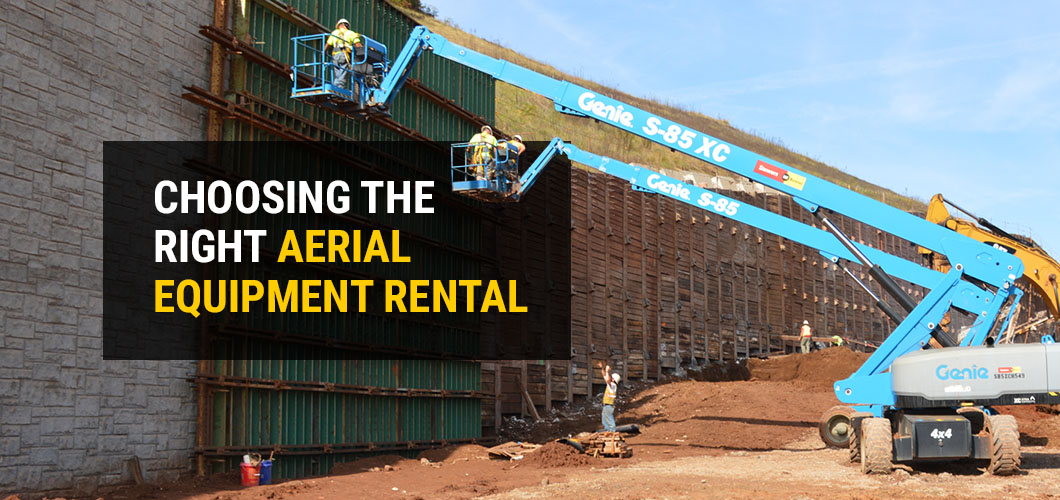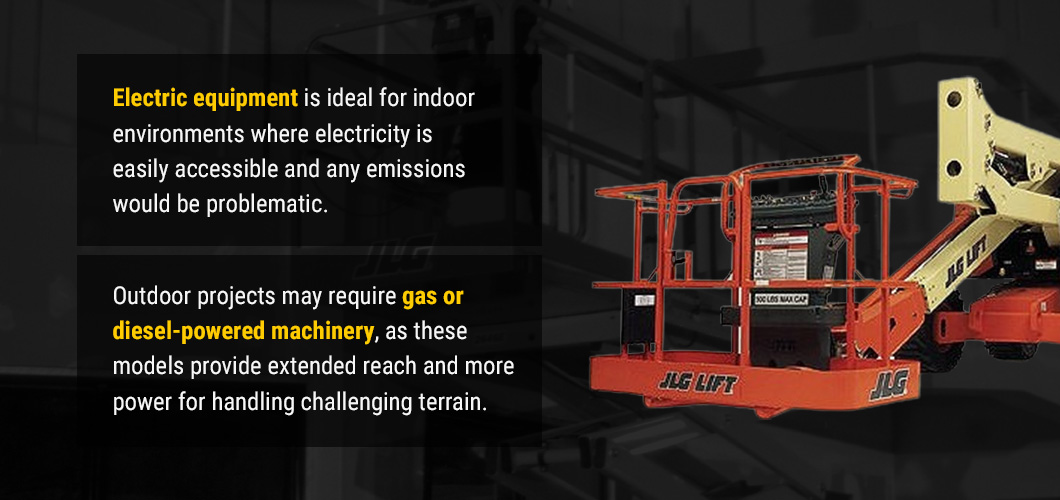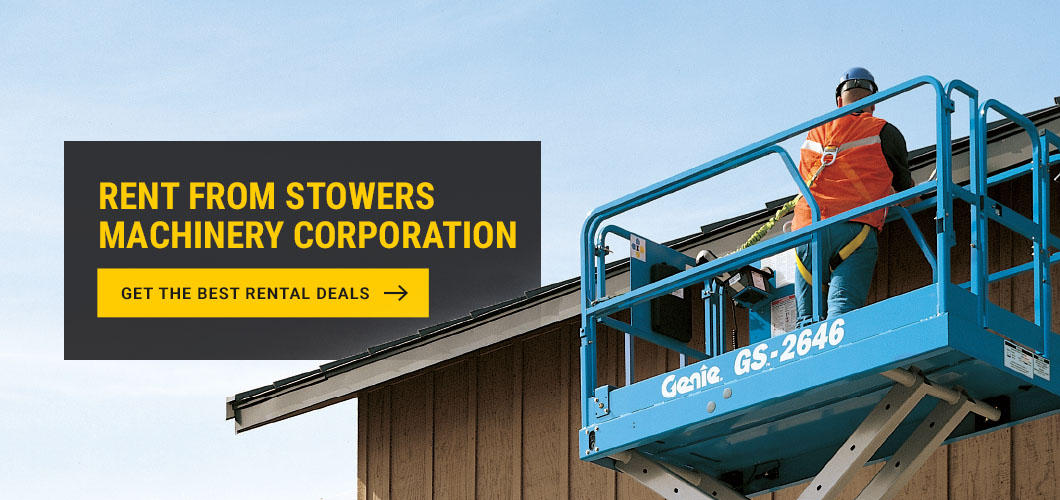
From building a new apartment complex to performing maintenance on a warehouse facility, choosing the right piece of aerial equipment can profoundly impact project efficiency and safety.
By the end of this guide, you will be equipped to review different aerial lift types and pick the right one for your project.
Project Requirements and Scope
Understanding your project’s specific requirements and scope is the first step in this process. Different tasks and working conditions demand varying types of aerial equipment, requiring you to tailor your choice to the unique demands of the job.
- Efficiency and productivity: The right equipment can enhance productivity. You can complete work more efficiently when you match the equipment to your project’s specific tasks and conditions.
- Cost control: Selecting aerial equipment that meets your project’s requirements prevents unnecessary expenses. You won’t overspend on equipment that’s more robust than you need, nor will you waste money on a rental that isn’t up to the task.
Height and Reach Requirements
The range of different aerial equipment types makes it necessary to have an idea of the capabilities you need before booking a rental.
Working Height
Working height represents the maximum height at which a worker or equipment operator can safely and effectively perform their tasks using a particular piece of machinery, such as a scissor lift, boom lift or aerial work platform.
Ensuring the working height is appropriate for the task is vital for protecting your crew and mitigating the risks associated with working on elevated surfaces.
Depending on your site requirements, you may find yourself weighing a scissor lift versus a boom lift. Each offers its own advantages:
- Scissor lifts: Scissor lifts consist of linked, folding supports extending to raise the work platform vertically. They are ideal for indoor and outdoor construction applications, providing a stable platform for workers and tools.
- Boom lifts: Also called cherry pickers, aerial boom lifts have a long, extendable arm with a work platform at the end. The boom can be telescopic or articulated, allowing for height and horizontal reach.
Horizontal Reach
Horizontal reach, in the context of aerial equipment and construction machinery, refers to the maximum horizontal distance that a piece of equipment can achieve from its base or pivot point. Horizontal reach is needed for tasks such as building maintenance, exterior painting, tree trimming, signage installation, bridge inspections and any work that needs access to positions that aren’t easily accessible via traditional means.
Telescopic and articulated boom lifts are known for their extended outreach capabilities, making them suitable for tasks that require reaching out over obstacles or around structures. Each offers distinct advantages:
- Telescopic boom lifts: These models have an extendable, straight arm that can reach significant heights. They are designed for maximum vertical reach and offer a higher weight capacity than other aerial lifts.
- Articulated boom lifts: Articulated boom lifts have multiple hinged sections that allow for flexibility and maneuverability. The articulating joints make them excellent for navigating around obstacles.
Indoor vs. Outdoor Construction Conditions
The terrain and surface conditions at your construction site can significantly impact selecting the right aerial equipment. While outdoor jobs involve work in the open air, indoor projects take place in enclosed areas such as warehouses and commercial buildings. This distinction results in specific requirements related to equipment selection.

Electric equipment is ideal for indoor environments where electricity is easily accessible and any emissions would be problematic. Meanwhile, outdoor projects may require gas or diesel-powered machinery, as these models provide extended reach and more power for handling challenging terrain. Gas-powered equipment is also better suited for remote locations where electricity may not be readily available.
Rough Terrain
Outdoor construction sites often involve rough or uneven terrain, such as gravel, dirt or rocky ground. In such conditions, choosing equipment that can handle rough terrain challenges is important. Consider options like:
- Rough terrain scissor lifts: These lifts feature robust, large tires and sturdy frames, making them suitable for uneven ground. They provide vertical elevation for tasks like exterior construction, installation and maintenance operations.
- Telehandlers: Telehandlers are versatile machines that can handle rough terrain and provide both reach and lifting capabilities.
Indoor and Smooth Surfaces
Some projects occur indoors or on smooth, finished surfaces like concrete or asphalt. For such conditions, consider equipment that minimizes damage to the surface and reduces noise:
- Electric scissor lifts: Electric scissors offer zero emissions, low noise levels and nonmarking tires, making them ideal for maintenance work in places like warehouses, retail stores or office buildings.
- Vertical personnel lifts: Personnel lifts are suitable for indoor applications, particularly in narrow spaces where aerial equipment maneuverability is crucial. They can access tight corners without damaging surfaces.
Capacity and Load Handling
When using construction equipment, safety is always a primary concern. Accounting for aerial equipment’s load capacity considerations minimizes the risk of working at heights. Consider the weight of materials, tools and personnel the equipment needs to lift to prevent overloading, which can lead to accidents, equipment damage and project delays.
Aerial equipment comes with load capacity ratings specified by the manufacturer:
- Platform capacity: This rating refers to the maximum weight the platform or basket can safely support. It represents the combined weight of workers, tools and materials.
- Maximum load: This rating accounts for the total weight the equipment can lift, including that of the platform itself and everything it currently holds.
Budget and Cost Considerations
Equipment rental cost considerations should always factor into project planning. To make informed decisions, be sure to evaluate your anticipated rental duration and get a confirmed quote on the piece of equipment you need. If you’re still not clear which aerial lift type will serve you best, discuss the project with your provider for assistance.
Rental Duration
Determine the anticipated duration of your project. Short-term rentals are ideal for brief projects, while long-term rentals may offer cost savings if your project spans several weeks or months.
Rental companies typically offer daily, weekly or monthly rates, with the longer durations costing less per day. Consider the most cost-effective option based on your project’s timeline.
Potential Cost Savings
Potential cost savings are the financial benefits realized by making efficient decisions. Selecting equipment, tools or resources that match your needs can prevent overinvestment and reduce operating costs. For example, choosing the right-sized aerial lift for a project can save on rental fees and fuel expenses.
Safety Features and Training
Ensuring the well-being of operators, workers and those near the equipment can be achieved by selecting equipment with essential safety features and prioritizing operator training and certification. Most aerial equipment rentals are recent releases that come with advanced safety solutions. To take full advantage of their capabilities, ensure your operators are trained in using systems such as:
- Fall protection: Aerial equipment should be equipped with fall protection features, such as guardrails, harness anchor points and safety interlock systems, to prevent operators from falling.
- Emergency controls: Safety systems should include emergency stop buttons or controls to halt equipment operation in case of an emergency or unsafe conditions.
Operator Training and Certification
Operator certification programs are typically conducted and issued by accredited organizations specializing in equipment safety and training. These programs involve an evaluation process to assess an operator’s knowledge and practical skills.
These certifications have expiration dates and may require periodic renewal or recertification. In many regions, operator certification is legally required. Noncompliance can result in fines, legal liabilities and safety violations.
Rent From Stowers Machinery Corporation
The decision to rent aerial equipment should be made thoughtfully and account for key factors such as project requirements, budget considerations and operator familiarity.
Stowers Machinery Corporation is a trusted partner for those handling construction and site maintenance projects in East Tennessee. With six decades of experience as East Tennessee’s Cat® equipment distributor, Stowers offers a comprehensive range of services, including sales, rentals, leasing, and parts and service support. Contact us to learn more about our range of services and equipment or request assistance with choosing the right aerial equipment rental.

